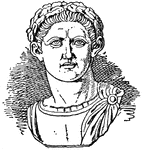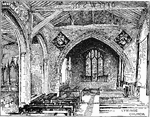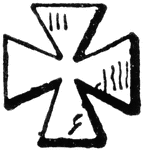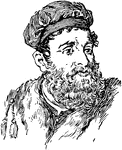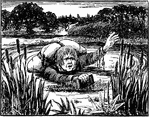Clipart tagged: ‘Christian’

All Saints' Church, Brixworth
All Saints' Church, Brixworth, is an outstanding example of early Anglo-Saxon architecture located in…
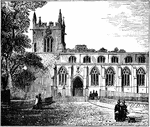
Bangor Cathedral, Caernarvonshire
The site of Bangor Cathedral was originally occupied by St. Deiniol's monastery, established in the…

Bede's Tomb, Durham Cathedral
He is well known as an author and scholar, and his most famous work, Historia ecclesiastica gentis Anglorum…
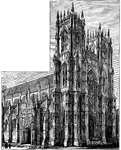
Beverly Minster
It is generally regarded as the most impressive (architecturally speaking) church in England that is…
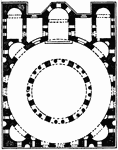
Cathedral at Bosra
Circular and polygonal plans appear in a number of Syrian examples of the early sixth century. Their…
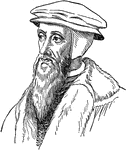
John Calvin
A French pastor during the Protestant Reformation, who helped develop the system of Christian theology…
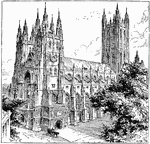
Canterbury Cathedral
The cathedral was founded by Augustine in 602 AD and dedicated to St. Saviour. The Cathedral's first…
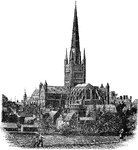
The Cathedral of East Anglia (Norwich)
Norwich Cathedral is a Church of England cathedral in Norwich in Norfolk, England dedicated to the Holy…

Wells Cathedral, Somerset
Built between 1175 and 1490, Wells Cathedral has been described as "the most poetic of the English Cathedrals".…
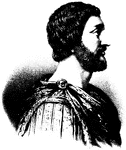
Charlemagne
(742-814) Christian Emperor. Time of rule was known as Carolingian Renaissance during which he built…
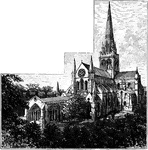
Chichester Cathedral
Chichester Cathedral in Chichester, West Sussex, England is an Anglican Cathedral. The Cathedral was…

Christ the Good Shepherd
"This quaint, rude figure, found in an early Christian tomb in Asia Minor, dates probably from the beginning…
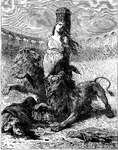
Christians Given to the Lions in the Roman Amphitheater
"More particularly was the new sect of Christians selected as the objects of vengeance. These people…
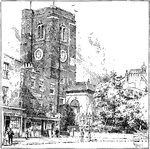
Old Church at Chelsea
Formerly it was the parish church of Chelsea when it was a village, before it was engulfed by London.…

CMS Mission Station, Island of Deshimo, Japan
The Church Mission Society, known as the Church Missionary Society in Australia and New Zealand, is…

Constantine the Great
Emperor of Rome from 306 to 337. He is best known for being the first Christian Roman emperor.

Durham Cathedral from the Wear
Founded in AD 1093, it remains a centre for Christian worship today. It is generally regarded as one…

Eyam Churchyard Cross
Eyam churchyard contains a Saxon cross dated to the 7th or 8th centuries. Initially, it was located…

George Fox
George Fox (July 1624 – 13 January 1691) was an English Dissenter and a founder of the Religious…
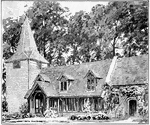
Greenstead Church
Greensted Church, in the small village of Greensted, near Chipping Ongar in Essex, England, is the oldest…
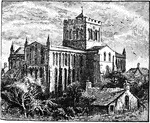
Hexham Abbey
There has been a church on the site for over 1300 years since Etheldreda, Queen of Northumbria made…

Pope Urban II
"Pope Urban II presiding over the council of Clermont in 1095 and calling the Christian people to the…

Jarrow Church Tower
The present parish church of St. Peter's at Wearmouth, on the north bank of the River Wear, occupies…
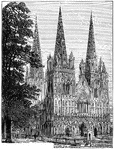
Lichfield Cathedral
Lichfield Cathedral is situated in Lichfield, Staffordshire, England. It is the only medieval English…
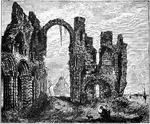
Lindisfarne Priory Ruins before 1860
The monastery of Lindisfarne was founded by Irish born Saint Aidan, who had been sent from Iona off…
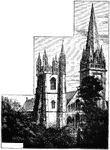
Llandaff Cathedral
Llandaff Cathedral is the seat of the Anglican Bishop of Llandaff (of the Church in Wales), situated…
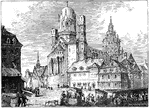
Mayence Cathedral
Now known as Mainz Cathedral. Originally St. John's Church, then St. Salvator, consecrated in 911 by…

Melrose Abbey Ruins
Melrose Abbey is a Gothic-style abbey in Melrose, Scotland. It was founded in 1136 by Cistercian monks,…

Minster Church, Isle of Sheppey
In English usage, Minster is an honorific title attached to certain major medieval churches. Most of…
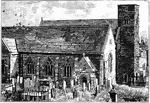
Monkwearmouth Church
The present parish church of St. Peter's at Wearmouth, on the north bank of the River Wear, occupies…
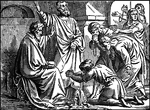
Paul and Peter in Prison, Baptizing Other Prisoners
Saint Paul and Saint Peter in prison, one seated, both bound in chains. One man has a book on his lap.…
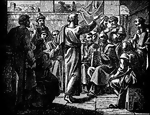
Peter and the Apostles Decide Not to Impose Circumcision on Christians
"And when there had been much questioning, Peter rose up, and said unto them, Brethren, ye know that…

Peter Crucified on an Upside Down Cross
Illustration of Peter being bound to an upside down cross. One man holds his upper body, while another…
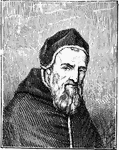
Pope Sixtus V
Pope Sixtus V (December 13, 1521 – August 27, 1590), born Felice Peretti di Montalto, was Pope…

Ripon Cathedral
People have been coming to worship and pray at Ripon for more than 1,350 years. The Cathedral building…
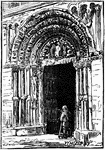
Rochester Cathedral, West Door
The present building is widely regarded as one of the finest Norman cathedrals in the country, with…
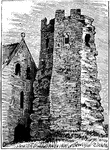
Roman Lighthouse, and Part of St. Mary's Church, Dover
The lighthouse on the Eastern Heights still stands in the grounds of Dover Castle to 80 foot (24 m)…
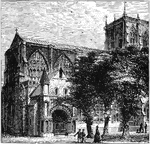
Sherborne Minster
The Abbey Church of St. Mary the Virgin at Sherborne in the English county of Dorset, is usually called…

Sompting Church Tower
The church was originally built by the Saxons around 960, then was adapted by the Normans when William…

St. Alban's Monastery Gate
This is the only building to survive. It was built c.1365 after its predecessor had been destroyed in…
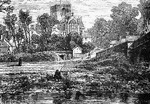
St. Asaph Cathedral
St Asaph Cathedral, (Welsh: Eglwys Gadeiriol Llanelwy) at St Asaph, Denbighshire, north Wales, is sometimes…
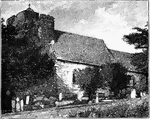
St. Martin's Church, Canterbury
St. Martin's was the private chapel of Queen Bertha of Kent in the 6th Century before Augustine arrived…
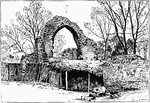
St. Pancras Church Ruins, Canterbury
St Pancras Old Church is a Church of England parish church on Pancras Road in North London. It is believed…
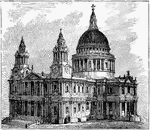
St. Paul's Cathedral
St Paul's Cathedral, is the Anglican cathedral on Ludgate Hill, in the City of London, and the seat…
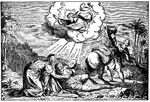
The Conversion of Paul - Saul Falls to the Ground
"And as he journeyed, it came to pass that he drew nigh unto Damascus: and suddenly there shone round…
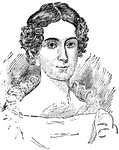
Letitia Christian Tyler
First Lady of the United States of America from 1841 until her death in 1842.
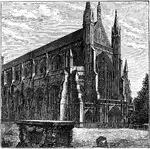
Winchester Cathedral
Winchester Cathedral at Winchester in Hampshire is one of the largest cathedrals in England, with the…

West Front of York Minster
York Minster is a Gothic cathedral in York, England and is the second largest of its kind in Northern…
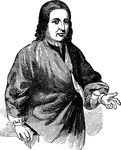
Nicolaus Ludwig Zinzendorf
Nikolaus Ludwig von Zinzendorf und Pottendorf, Imperial Count of Zinzendorf and Pottendorf, (May 26,…




